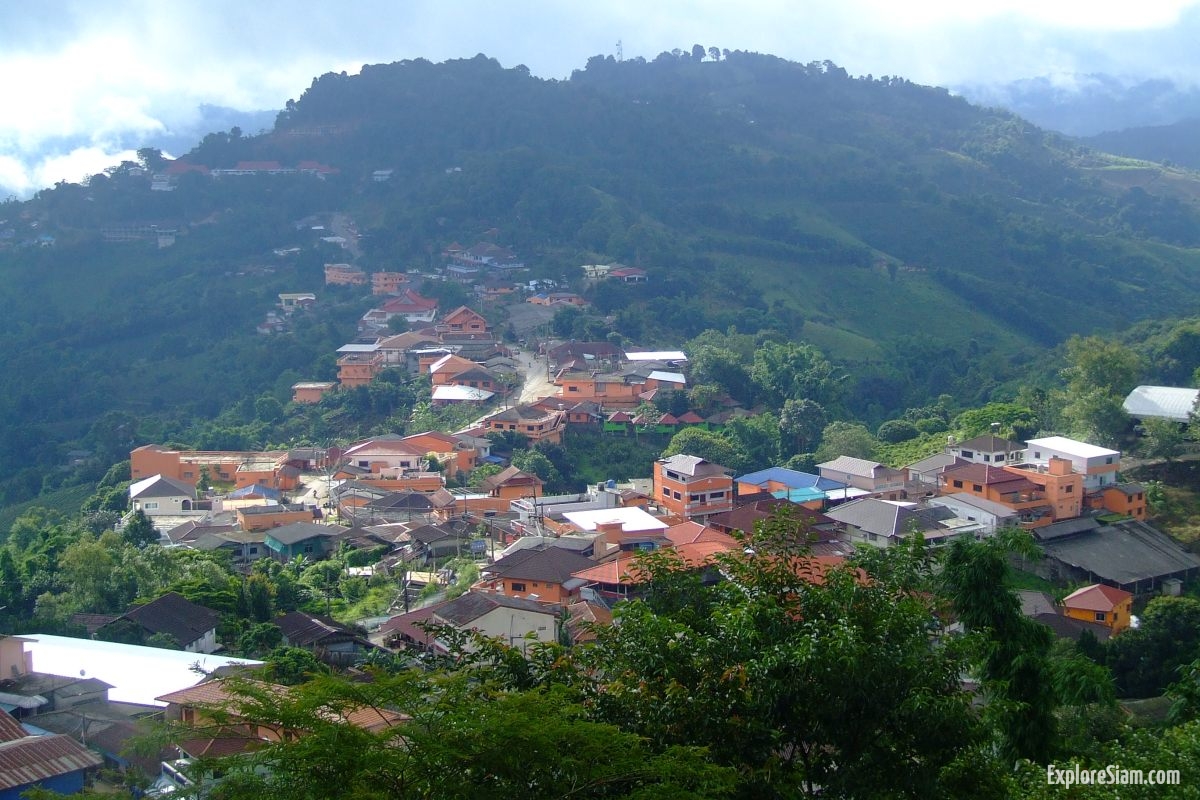Nestled high in the misty mountains of Northern Thailand, Mae Salong is more than just a village; it’s a journey back in time. This small, serene community, perched on the rolling hills of Chiang Rai province, offers a unique blend of history, culture, and natural beauty that captivates every traveler who ventures to this remote corner of the world. With its terraced tea plantations, rich Chinese heritage, and the ever-present scent of oolong in the air, Mae Salong is a place where time seems to slow down, allowing visitors to savor every moment.
The Journey to Mae Salong
Reaching Mae Salong is an adventure in itself, and one that is not for the faint of heart. The village is located about 70 kilometers from the city of Chiang Rai, and the journey takes you through some of the most breathtaking landscapes Northern Thailand has to offer. The road to Mae Salong winds its way up steep, narrow mountain paths, with sharp bends and sudden drops that reveal stunning vistas at every turn. While the scenery is undeniably beautiful, the drive requires careful navigation, particularly in the more treacherous sections. It is highly recommended to make the trip during daylight hours, not only for safety reasons but also to fully appreciate the dramatic landscapes that unfold as you ascend into the mountains. As you approach Mae Salong, the air grows cooler, the vegetation denser, and the sense of anticipation greater.
A Sanctuary for Chinese Refugees
Mae Salong’s origins are as compelling as its setting. The village was established in the aftermath of the Chinese Civil War, when soldiers from the Kuomintang (KMT), the Chinese Nationalist Party, fled to the region after their defeat by Mao Zedong’s Communist forces in 1949. These soldiers, along with their families, initially settled in Burma (now Myanmar), but political instability and continued conflict forced them to seek refuge across the border in Thailand. In the 1960s, the Thai government granted these Chinese refugees asylum in exchange for their assistance in combating communist insurgencies along the border. Mae Salong was thus born as a military outpost, its strategic location atop the mountains providing both protection and a clear vantage point. Over the years, as peace returned to the region, the focus of the community shifted from military operations to agriculture, particularly the cultivation of tea, which would come to define Mae Salong’s identity.
Today, Mae Salong is home to a population of around 20,000 people, a diverse mix that includes the descendants of the original Chinese settlers, as well as members of various ethnic minorities such as the Akha, Lisu, and Yao, who have integrated into the village over the decades. This cultural mosaic is evident in the village’s daily life, from the languages spoken to the traditional dress and customs still practiced by its inhabitants.

The Tea Plantations of Mae Salong
Tea is the lifeblood of Mae Salong, and the village’s landscape is dominated by vast, terraced tea plantations that stretch as far as the eye can see. The cool, high-altitude climate of the region is ideal for tea cultivation, and the hills around Mae Salong are blanketed with orderly rows of tea bushes, creating a patchwork of vibrant greens that change hue with the seasons. Tea has been grown in Mae Salong for decades, but it was not until the late 20th century that it became the village’s primary economic activity, thanks in part to government initiatives aimed at replacing opium production with more sustainable and legal crops.
Visitors to Mae Salong are often struck by the sheer beauty of the tea plantations, which offer some of the most picturesque views in all of Thailand. Many of the local tea farms welcome visitors, offering guided tours that provide insight into the entire tea-making process. From the careful plucking of the tender leaves to the intricate drying and rolling techniques, the art of tea production in Mae Salong is a tradition passed down through generations. The village is particularly famous for its high-quality oolong tea, which is known for its rich flavor and aromatic qualities. Sampling the tea straight from the source is an experience not to be missed, and many farms offer tastings where visitors can savor the unique flavors that are the hallmark of Mae Salong’s tea.
A Village Steeped in Culture
While tea is the main attraction, Mae Salong offers much more than just beautiful landscapes and delicious brews. The village is a cultural treasure trove, with a heritage that reflects its Chinese roots and the influences of the various ethnic groups that call it home. Walking through Mae Salong, you’ll encounter traditional Chinese-style architecture, with red-tiled roofs, ornate decorations, and incense-filled temples that serve as reminders of the villagers’ ancestry. The market in the center of the village is a hive of activity, where locals sell everything from fresh produce to handmade crafts, and where the air is filled with the aromas of traditional Chinese and Thai dishes being prepared.
Mae Salong’s history is also preserved in its museums and monuments, which tell the story of the village’s founding and its evolution over the decades. One notable site is the Martyrs’ Memorial, which honors the KMT soldiers who fought and died during the Chinese Civil War and the subsequent battles against communist forces in Southeast Asia. The memorial, set against the backdrop of the mountains, is a poignant reminder of the sacrifices made by those who sought refuge in this remote village.

The Tea Houses and Markets
Mae Salong’s tea culture is not confined to the plantations. The village is dotted with charming tea houses and cafes, where visitors can relax and enjoy a cup of freshly brewed tea while taking in the stunning views. Each tea house has its own unique atmosphere, ranging from traditional Chinese-style establishments to more modern cafes, but all share a common love for the art of tea. Many of these tea houses also sell locally grown and processed teas, along with a variety of other products such as dried fruits, herbal medicines, and handcrafted items. These shops provide an excellent opportunity to purchase authentic Mae Salong tea and other souvenirs to take home.
The village market is another must-visit destination. Here, you can find a wide range of local products, from the freshest vegetables and fruits grown in the fertile soil of the mountains to traditional Chinese and ethnic Thai foods that reflect the diverse heritage of the village. The market is a sensory experience, with the vibrant colors of the produce, the enticing smells of street food, and the lively sounds of bargaining and conversation filling the air.
The Authentic Charm of Mae Salong
One of the most enchanting aspects of Mae Salong is its authenticity. Despite its growing popularity as a tourist destination, the village has managed to retain much of its original charm and character. The pace of life in Mae Salong is slow and unhurried, with a strong sense of community that is evident in the warm hospitality extended to visitors. The villagers are proud of their heritage, and they take great care to preserve their traditions while welcoming outsiders to share in their way of life.
Mae Salong’s remote location has played a significant role in preserving its cultural integrity. The village is not easily accessible, and the journey there can be challenging, but this isolation has helped protect it from the rapid development and commercialization that has affected other parts of Thailand. As a result, Mae Salong offers a rare glimpse into a way of life that has remained largely unchanged for decades.
A Destination for All Seasons
Mae Salong is a destination that can be enjoyed year-round, each season bringing its own unique charm to the village. In the cooler months, the village is often enveloped in a soft mist that adds an ethereal quality to the landscape, while the summer months bring clear skies and warm temperatures that are perfect for exploring the tea plantations and surrounding mountains. The village is particularly beautiful during the tea harvest season, when the hills are alive with activity as workers pick the fresh leaves that will be processed into Mae Salong’s famous teas.
Whether you visit Mae Salong for its tea, its history, or simply to escape the hustle and bustle of modern life, you will find a village that is as welcoming as it is beautiful. With its stunning scenery, rich cultural heritage, and the simple pleasures of life on offer, Mae Salong is a place that stays with you long after you have left its misty mountains behind.





